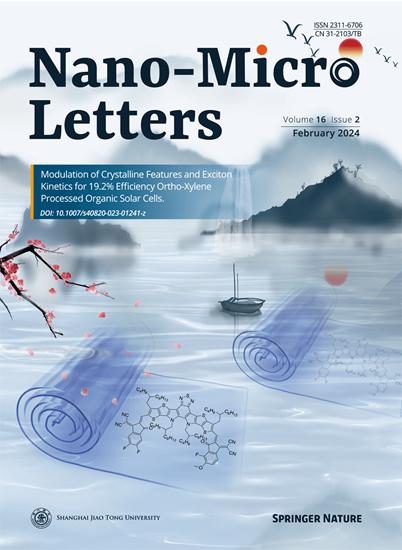高能钠离子电池硬碳阳极封闭孔的全面认识。
IF 36.3
1区 材料科学
Q1 Engineering
引用次数: 0
摘要
硬碳(HC)由于其高成本效益和优异的综合性能,被认为是钠离子电池(sib)最有前途的负极材料。然而,HC的非晶态和复杂的微观结构给阐明结构-性能关系带来了重大挑战,这导致了对闭孔内在特征的持续误解。不合理的闭孔构造方法必然导致高原承载力下降,严重制约了HC在高能量密度场景下的实际应用。本文对封闭孔隙的概念框架和形成机制进行了系统的阐述,为其结构特征和形成途径提供了重要的见解。随后,通过将晶格参数与缺陷构型相关联,建立了控制脱溶动力学和钠储存行为的结构-性能关系。此外,结构工程的开创性进展被严格地综合起来,以建立HC中封闭孔隙的合理调节的基本设计原则。必须强调的是,采用分子水平的观点,结合协同动力学/热力学方法,对于理解和控制开孔到闭孔的转化过程至关重要。这些创新的观点是战略性的,旨在加速HC的商业化,从而促进sib的可持续和高效发展。本文章由计算机程序翻译,如有差异,请以英文原文为准。
Comprehensive Understanding of Closed Pores in Hard Carbon Anode for High-Energy Sodium-Ion Batteries
Highlights
-
This review summarizes the latest advances in closed pore structures within hard carbon anodes for sodium-ion batteries, establishing a conceptual framework and origination mechanisms under a unified perspective of active sites.
-
The influence of closed pore characteristics on sodium storage behavior is systematically explored, with design principles proposed for directional regulation of pore structures.
-
Future research directions are highlighted, integrating advanced modification strategies with molecular-level design and dynamic/thermodynamic hybrid analyses for performance optimization.
求助全文
通过发布文献求助,成功后即可免费获取论文全文。
去求助
来源期刊

Nano-Micro Letters
NANOSCIENCE & NANOTECHNOLOGY-MATERIALS SCIENCE, MULTIDISCIPLINARY
CiteScore
32.60
自引率
4.90%
发文量
981
审稿时长
1.1 months
期刊介绍:
Nano-Micro Letters is a peer-reviewed, international, interdisciplinary, and open-access journal published under the SpringerOpen brand.
Nano-Micro Letters focuses on the science, experiments, engineering, technologies, and applications of nano- or microscale structures and systems in various fields such as physics, chemistry, biology, material science, and pharmacy.It also explores the expanding interfaces between these fields.
Nano-Micro Letters particularly emphasizes the bottom-up approach in the length scale from nano to micro. This approach is crucial for achieving industrial applications in nanotechnology, as it involves the assembly, modification, and control of nanostructures on a microscale.
 求助内容:
求助内容: 应助结果提醒方式:
应助结果提醒方式:


